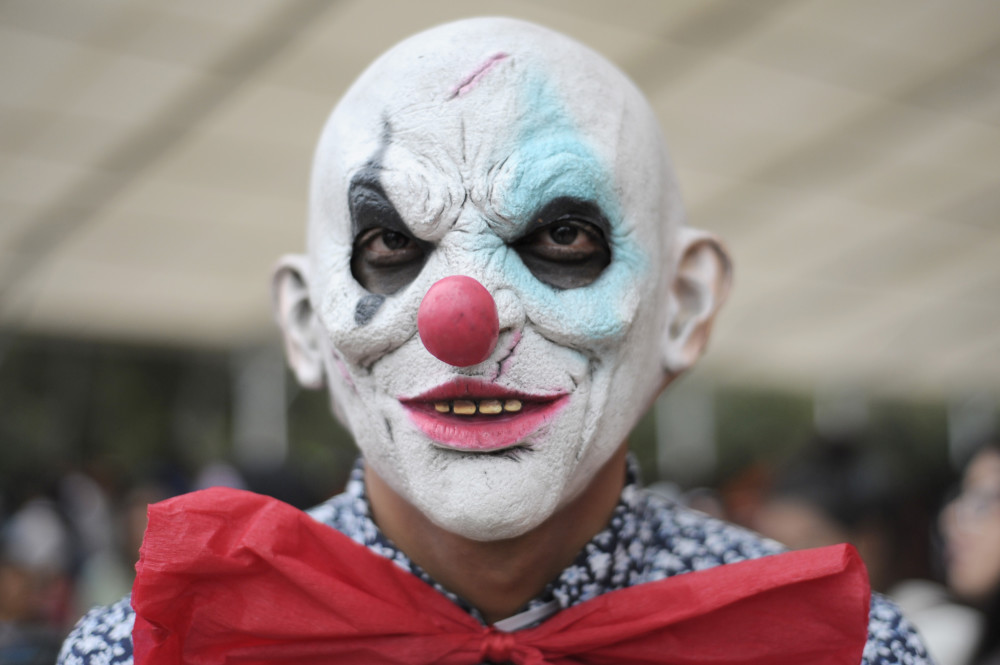By Christine Clarridge
The Seattle Times
WWR Article Summary (tl;dr) The clown craze is interesting, and not particularly surprising, to some social psychologists. Is there some type of social contagion going on here or is this simply a media phenomenon…you be the judge.
SEATTLE
What’s up with these creepy clowns?
Across the nation, and even across seas, people have been calling police to report being menaced by people in clown costumes.
An expert in the field of group psychology at Washington State University says there are several factors that could play into the motives of the “deviant” jesters.
Among them are distress and anxiety, social contagion, a desire to be noticed and stand out and “the well-established principle of de-individuation” in which people who feel anonymous or disguised do things they ordinarily wouldn’t do.
“The spreading of unusual behaviors is more common at times when there is a lot of tension, conflict and anxiety,” said Craig D. Parks, social psychologist and assistant vice provost at WSU.
“You may have people who don’t like the way the world is going, who feel that their economic situation is not improving or are very upset about the high-tension presidential race,” Parks said. “All things being equal, that could incline them toward deviant behaviors.”
While law-enforcement authorities say that many of the reports have turned out to be hoaxes, The New York Times reported that a dozen people have been arrested.
In Kentucky, a man dressed as a clown was arrested after lurking in the woods. Children in Ohio and Texas have been charged with making clown-related threats to school classmates. A New York City teen told police a clown threatened him with a knife in the subway. In Wisconsin earlier this month, a couple was arrested after police discovered they’d left their 4-year-old child home alone while they went clowning.
Parks said the clown craze is interesting, and not particularly surprising, to social psychologists.
“There are classic aspects to it that we’ve seen in the past,” he said.
Among those aspects is the principle of de-individuation.
“When people are taking part in a riot they may do things, such as set things on fire and tip cars, that they would otherwise think was wrong.”
Another factor that’s at play could be what Parks called social contagion. Although traditionally social contagion is more likely to spread among people who have frequent physical contact with each, the internet has altered that aspect of the phenomenon.
Social contagion is when somebody does something unusual, and it affects other people, said Parks.
“People see it and say, ‘Wow! I’m going to do that, too,” he said.
Copycat clowns are likely motivated by the idea of getting attention and making it into the news.
“If you feel that people aren’t paying attention to you, and you want to stand out and you see that people are being written about for dressing like a clown and jumping out and scaring people, this may be a relatively safe way to get attention,” Parks said.
Bill Indick, a visiting professor of psychology at The Evergreen State College in Olympia, Wash., who specializes in media psychology, agrees that attention-seeking behavior is one explanation.
But at its heart, he says, the clown craze is a media phenomenon.
“That’s why it comes in waves,” Indick said.
“The media propagates it, creates it, feeds it and at a certain point, gets tired of it.
The media then digests it and eliminates it. And just as quickly as it started, it’s over.”














































































































































































































































































































































































